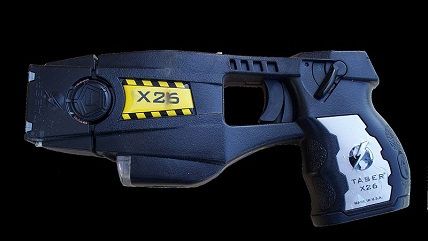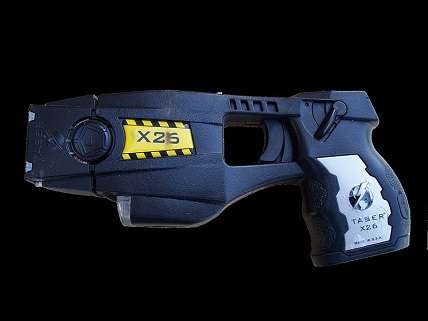Dangerous People and Deadly Force
The priority for government agencies is to push the development of safer, more reliable and more effective weapons that can spare law enforcement agents awful choices.


When a man jumped over the White House fence, ran across the lawn and entered the residence, the Secret Service failed and failed again. One of the most conspicuous and surprising failures was that though it had armed agents on the ground and snipers on the roof, no one fired a shot to stop him.
In fact, the agency bragged about not using their guns, saying that "the officers showed tremendous restraint and discipline in dealing with this subject." The agents didn't shoot Omar Gonzalez because they "apparently concluded that he was not armed and did not appear to be carrying anything that might contain explosives," reported The New York Times.
Lucky guess. As it turned out, he was carrying a folding knife with a 3 1/2-inch blade, which could have been put to deadly use. But agents were able to subdue him without bloodshed. A man reported to be mentally ill didn't hurt anyone and wasn't killed unnecessarily.
All's well that ends well? Hardly. The idea that security officers would let a running intruder pass, based on the instant and highly fallible judgment that he was unarmed, suggests an excess of caution. "Tremendous restraint is not what we're looking for," said Rep. Jason Chaffetz, R-Utah. "The message should be overwhelming force."
But that's not quite the right answer, either. Just this year, six people have scaled the fence—and no one would commend the Secret Service if all six had been riddled immediately with bullets. Gonzalez might have been stopped by attack dogs, which for some reason were not unleashed. It would be unfortunate to kill someone whose mental illness drove him to do something terribly stupid.
The problem lies in the limited nature of the agency's options: shoot the trespasser or hold off in the hope that he is unarmed and can be captured alive. What the Secret Service needs is something every law enforcement agency needs: weapons that can incapacitate threatening suspects without inflicting deadly wounds.
The need arises all the time. A few days after the fatal police shooting of Michael Brown in Ferguson, Mo., a 25-year-old St. Louis man named Kajieme Powell, carrying a knife in his hand, was approached by cops. He walked toward them, yelling, "Shoot me! Kill me now!" They did exactly that, to the outrage of some who saw the video.
Law enforcement officers in situations like these face a terrible dilemma: kill someone who may be harmless or risk being killed. Small wonder the cops shot Powell rather than wait to see whether he would actually try to stab them. Small wonder the Secret Service agents couldn't bring themselves to fire. In these cases, either decision can have fatal consequences, and it has to be made quickly.
That's why police need to make more use of nonlethal methods—and, even more important, need additional nonlethal methods that defuse dangers. Right now, about the only reasonable option is a "conducted energy device" or stun gun, the best known being the Taser. These weapons, however, are less certain than guns to stop a potential attacker and have a shorter range.
Tasers have a mixed reputation. Some suspects have died after being hit. The devices are also sometimes abused. Chicago Police Commander Glenn Evans was recently indicted for, among other things, allegedly holding a Taser to a suspect's crotch.
But guns can also be abused: Evans is accused of shoving the barrel of his service weapon into the suspect's mouth and threatening to kill him. Research generally indicates that Tasers rarely cause death.
In practice, they are more likely to benefit those who get crosswise with cops. A 2007 study published in The American Journal of Emergency Medicine concluded that the devices were used in many situations where lethal force was warranted, saving some 1,100 lives over six years. A 2009 study in the American Journal of Public Health found injuries to both police and suspects decline when cops make greater use of Tasers.
The priority for government agencies is to push the development of safer, more reliable and more effective weapons that can spare law enforcement agents awful choices. Gonzalez was allowed to enter the White House, and Powell was shot to death. We need methods that would stop both and save both.


Show Comments (164)